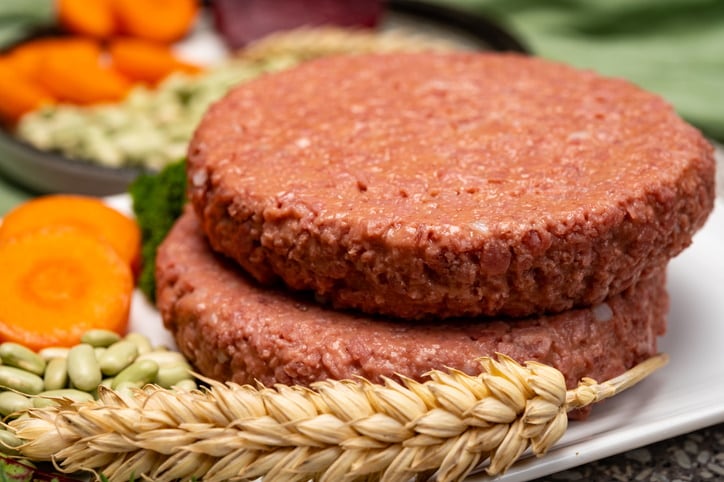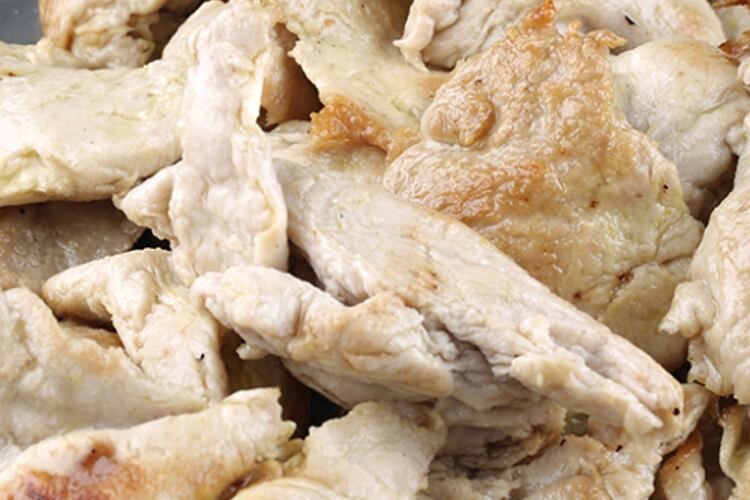Diets that consist of high levels of plant-based foods such as root vegetables, pulses, fruit and vegetables are generally recognised as having a lower climate impact and being associated with health benefits such as reduced risk of age-related diabetes and cardiovascular disease. As the popularity of plant-based diets rises, the market has seen a proliferation of plant-based alternatives that are processed to mimic meat.
However, researchers from Chalmers University of Technology in Sweden note, unlike unprocessed plant-based foods, there are ‘many challenges’ regarding the nutritional value of these analogue products. According to the research team, there have been ‘far fewer’ studies into how health outcomes are affected by eating meat substitutes, which are usually based on textured plant proteins.
The team, from the Division of Food Nutrition and Science at Chalmers, set out to address this knowledge gap by analysing 44 different meat substitutes sold in Sweden. The products included in the study were mainly manufactured from soy and pea protein, but also included the fermented soy product tempeh and mycoproteins, that is, proteins from fungi.
“Among these products, we saw a wide variation in nutritional content and how sustainable they can be from a health perspective. In general, the estimated absorption of iron and zinc from the products was extremely low. This is because these meat substitutes contained high levels of phytates, antinutrients that inhibit the absorption of minerals in the body,” explained Cecilia Mayer Labba, the study’s lead author, who recently defended her thesis on the nutritional limitations of switching from animal protein to plant-based protein.
Iron and zinc bind to phytates, limiting absorption
Phytates are found naturally in beans and cereals – and they accumulate when proteins are extracted for use in meat substitutes. In the gastrointestinal tract, where mineral absorption takes place, phytates form insoluble compounds with essential dietary minerals, especially non-heme iron (iron found in plant foods) and zinc. This means that they cannot be absorbed in the intestine.
“Both iron and zinc also accumulate in protein extraction. This is why high levels are listed among the product’s ingredients, but the minerals are bound to phytates and cannot be absorbed and used by the body,” Mayer Labba elaborated.
Recent data published in The Lancet suggests 1.2bn pre-menopausal women are deficient in iron, zinc or folate. In the region defined as Europe and Central Asia by the study, led by the Global Alliance for Improved Nutrition, 68% of reproductive age non-pregnant women were found to have micronutrient deficiencies.
Iron deficiency among women is a ‘widespread’ global problem, the authors of the Swedish research noted. In Europe, 10-32% of women of childbearing age are affected and almost one in three teenage girls at secondary school in Sweden are deficient in iron. Women are also the group in society most likely to have switched to a plant-based diet and to eat the least amount of red meat, which is the main source of iron that can be easily absorbed in the digestive tract, the researchers stressed.
“It is clear that when it comes to minerals in meat substitutes, the amount that is available for absorption by the body is a very important consideration. You cannot just look at the list of ingredients. Some of the products we studied are fortified with iron, but it is still inhibited by phytates,” observed Ann-Sofie Sandberg, Professor of Food and Nutrition Science at Chalmers and co-author of the study.
Sandberg believes that the nutritional content of plant-based analogues should be assessed based on the bioavailability of nutrients. “We believe that making nutrition claims on only those nutrients that can be absorbed by the body could create incentives for the industry to improve those products,” she suggested.
Fresh processing methods could deliver better nutritional outcomes
The researchers maintain that the food industry needs to develop ‘new methods’ to process plant-based proteins that maximise their nutritious value.
The study found tempeh, made from fermented soybeans, differed from the other meat substitutes in the amount of iron available for absorption by the body, for instance. They said this was expected, as the fermentation of tempeh uses microorganisms that break down phytates. Mycoproteins stood out for their high zinc content, without containing any known absorption inhibitors. However, according to the researchers, it is still unclear how well our intestines can break down the cell walls of mycoprotein and how this in turn affects the absorption of nutrients.
“Plant-based food is important for the transition to sustainable food production, and there is huge development potential for plant-based meat substitutes. The industry needs to think about the nutritional value of these products and to utilise and optimise known process techniques such as fermentation, but also develop new methods to increase the absorption of various important nutrients,” Mayer Labba said.
Source
Nutritional Composition and Estimated Iron and Zinc Bioavailability of Meat Substitutes Available on the Swedish Market
Nutrients
DOI: 10.3390/nu14193903
Authors: Cecilia Mayer Labba, Hannah Steinhausen, Linnéa Almius, Knud Erik Bach Knudsen and Ann-Sofie Sandberg




